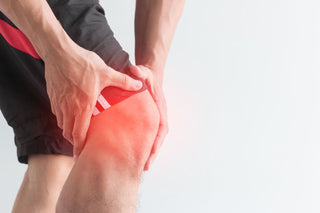Don’t take your knee pain lightly. Knee pain can make everyday movements difficult or even excruciating. Its important to understanding the problem and learn the effective treatments.
Knee pain is NOT normal. The purpose of the knee is to aid in weight-bearing and absorb shock during standing, walking, running and even getting up movements. A healthy and normal knee is strong and pain-free with a good range of motion. Fighting through knee pain other than working to heal and prevent it can cause more pain in the long run. For instance, overlooking knee pain that turns out to be a ligament tear could involve damages to the supporting structure.
Finding the underlying cause of the pain is key first step:
It's easy to leap to decisions when you experience knee pain. A young, individual may have a different or same type of injury as an older adult. Identifying the real reason is the key to successful treatment.
What's more?
Inflammation is one of the most common causes of knee pain. The tissues in your knee can become swollen following strenuous activity, or cartilage wears away and causes bone-to-bone dissent. Remedy for knee pain usually starts with managing and reducing inflammation.
Management of knee pain with acronym P.R.I.C.E. Following R.I.C.E. (Protect, Rest, Ice, Compress, Elevation) with your Knee two or three times every day will help reduce inflammation. Each step has a role:
Protect: Avoiding further injury is the key to allowing healing to take place.
Rest: whatever is irritating or aggravating the pain-causing it to swell, resting your knee gives it a break.
Ice: applying cold compressions on your knee for 15 minutes reduces inflammation by confining blood flow. It also acts as an analgesic, numbering, or pain killer.
Compression: Squeezing your Knee with a tight wrap limit excess blood flow or heat around the location.
Elevate: Elevating the Knee and leg increases blood flow back to nature, eliminating excess blood from your knee, allowing faster recirculation.
Your doctor may also advise taking anti-inflammatory(NSAIDs) or over-the-counter pain-relieving medication for a short period.
How to diagnose a knee problem?
It is essential to know that the knee joint is the primary source of stability in your body. Any changes in your knee joint can affect the segments above and below. Experiencing pain in other parts of the body such as lower back, hips, ankles when limping due to pain and or instability are side effects of biomechanics compensation and progression of problem.
Whether you have experienced a sudden traumatic knee injury or your knee has been unusually stiff and sore for several weeks, having it reviewed by your doctor is always a good move. A traumatic cause of knee pain is usually a specific event you can point to, like your knee buckling when you plant your foot wrong, when taking part in physical activities. A non-traumatic cause is a build-up process. If you play sports with your friends all week or perform repetitive motions during your workout pattern, you could develop soreness that gets worse over time. Obesity is another non-traumatic cause of knee pain. Excess weight adds ongoing stress to knees. Non-traumatic knee pain can be just as severe as a traumatic injury.
When to see your doctor about that knee pain.
If you are experiencing pain or inflammation without any trauma to your knee,
If R.I.C.E. for 7 - 14 days has not resolved the problem.
If a traumatic knee injury, causes a pop or a crack sound,
If limping, or having problems positioning weight on your knee
Early detection, correct correction and continuous prevention are the 3 key factors in solving muscular, skeletal problems. Health is a gift we take for granted until its lost or diminished.

